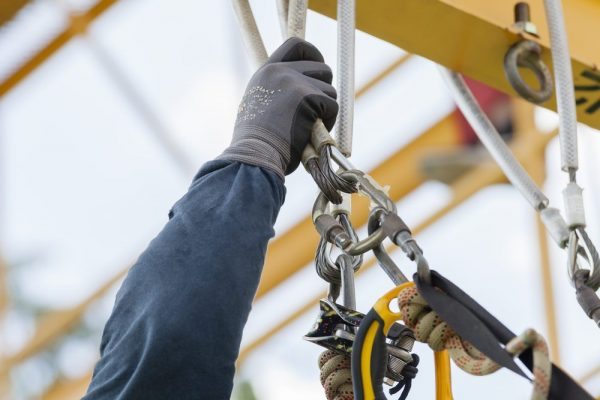Safety managers must thoroughly inspect equipment used by employees. Neglecting to check equipment could endanger the lives of their workers.
What Employers Should Know
Safety equipment checks should always occur if safety assessment reports identify significant risk to employees. Risks include damaged or faulty equipment and any gear that doesn’t meet standards from the U.S. Occupational Safety and Health Administration.
According to Facilitiesnet, OSHA has developed a list of safety standards for common pieces of personal protection equipment such as:
- Head protection (standard 29 CFR 1910.135).
- Eye and face protection (standard 29 CFR 1910.133).
- Hand protection (standard 29 CFR 1910.138).
- Respiratory protection (standard 29 CFR 1910.135).
By reviewing those standards, safety managers will know what to look for during safety checks.
How to Conduct the Safety Check
Safety managers should carefully inspect the parts of equipment necessary for safety, though inspecting equipment will vary depending on its use and what the conditions it’s exposed to. Developing a checklist in line with OSHA requirements is one method to help with every inspection.
For example, if employers plan to inspect positioning straps, they should make sure:
- Rivets are secured properly.
- Straps are 100 percent leather.
- There are no burns, cuts or extra holes.
- The warning center of the strap isn’t exposed.
In addition to OSHA requirements, safety managers will also want to incorporate safety guidelines from manufacturers.

When to Inspect Equipment
Equipment should be regularly inspected by employers, ideally on three different instances:
Quick Checks
Quick checks are instances where equipment, like vehicle brakes, is inspected just before use to make sure everything is working properly. These are conducted on a daily basis.
Weekly Inspections
Gear should be inspected weekly because quick checks may not always reveal equipment defects or malfunctions. Checking the functionality of safety harnesses is another example of equipment that should be inspected weekly.
Extensive Examinations
Extensive safety checks are spaced apart by every few months or sometimes longer. Inspecting a ladder to ensure it still meets its load capacity is one type of extensive examination.
Knowing when to inspect equipment is important, but employers have to balance safety with efficiency. Yes, faulty gear needs to be spotted. But performing too many extensive examinations in a short period of time may prevent employees from completing their work because extensive inspections keep gear out of commission for a longer time.
Employers must take workplace safety seriously and inspecting equipment is an important process toward creating a safe work environment.
Read more:
Best Practices to Ensure Ladder Safety
Prevention of Serious Injuries Starts At the Top
What Makes A Strong Safety Assessment?
How Workers Can Protect Their Hands From Disease
OSHA Highlights Fall Prevention
Safety Drives Revenue and Productivity
E-commerce offerings:
(Contact a Customer Service Representative for additional selections, options and solutions).
Safety and PPE
Fall Protection
First Aid
Head Protection
Ergonomics
Call and let us help meet all of your supply needs (866-483-7289).
Did you know that any customer is eligible for online ordering? All you need to do is fill out this online form.
Key benefits include:
- Order anytime, 24/7, 365 days a year. If you can connect, you can place an order.
- Create order templates, aka “My Lists.” Reduce search time, click, order, done.
- Track purchase history and view your account information. You can review invoices any time, track purchase history, and print or download records.